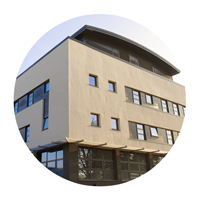Please provide figures for your Trust, for (i) 2011/12, (ii) 2012/13 and (iii) 2013/14:
1. No. of patients diagnosed with Barrett’s oesophagus (Specify time period)– i) 583 ii) 466 iii) 559
a. Of those diagnosed with Barrett’s oesophagus, the number with high grade dysplasia – Cannot separate high grade/low grade as coded under same code
b. Of those diagnosed with Barrett’s oesophagus, the number with low grade dysplasia – Same as above
2. No. of patients under surveillance with Barrett’s oesophagus – Cannot identify patients under surveillance
a. Of those under surveillance, the number with high grade dysplasia – Cannot identify patients ‘under surveillance’
b. Of those under surveillance, the number with low grade dysplasia – Cannot identify patients under surveillance
3. No. of patients diagnosed with oesophageal adenocarcinoma– i) 772 ii) 874 iii) 821
4. No. of patients diagnosed with Barrett’s oesophagus who had an endoscopic mucosal resection (EMR) – 0 for all periods
a. Of those who had EMR, the number for low grade dysplasia – Cannot identify high grade/low grade
b. Of those who had EMR, the number for high grade dysplasia – Cannot identify high grade/low grade
c. Of those who had EMR, the number for intramucosal cancer– i) 1 ii) 0 iii) 0
5. No. of patients diagnosed with Barrett’s oesophagus who had radiofrequency ablation (RFA) without EMR – 0 for all periods
a. Of those who had RFA, the number for low grade dysplasia – Cannot identify high grade/low grade
b. Of those who had RFA, the number for high grade dysplasia- Cannot identify high grade/low grade
c. Of those who had RFA, the number for intramucosal cancer – 0 for all periods
6. No. of patients diagnosed with Barrett’s oesophagus who had EMR followed by radiofrequency ablation (RFA) – 0 for all periods
a. Of those who had RFA, the number for low grade dysplasia – Cannot identify high grade/low grade
b. Of those who had RFA, the number for high grade dysplasia – Cannot identify high grade/low grade
c. Of those who had RFA, the number for intramucosal cancer – 0 for all periods
7. No. of patients diagnosed with Barrett’s oesophagus treated with photodynamic therapy – 0 for all periods
8. No. of patients diagnosed with Barrett’s oesophagus treated with cryotherapy – 0 for all periods
9. No. of patients diagnosed with Barrett’s oesophagus who had an antireflux operation – i) 0 ii) 3 iii) 8
10. No. of patients diagnosed with Barrett’s oesophagus who had an Oesophagectomy – i) 0 ii) 1 iii) 1
11. Total no. of patients treated for oesophageal cancer – Same as answer to part 3 as coded under the same code
a. Adenocarcinoma– Same as answer to part 3 as coded under the same code
b. Squamous cell carcinoma – Same as answer to part 3 as coded under the same code
12. Total no. of patients treated for oesophageal cancer who had previously been diagnosed with Barrett’s oeosophagus – Cannot answer this
13. No. of patients with high grade dysplasia put back into surveillance without any other treatment – Cannot answer this
14. Number of patients with HGD in surveillance who developed adenocarcinoma – Cannot answer this
15. No. of people with adenocarcinoma treated with endoscopic therapies – Need to be more specific with ‘endoscopic therapies’
16. No. of people with stage T1A are treated with a) endoscopic therapies b) resection c) other treatments – Cannot identify ‘stage T1A’ patients
17. No. of people with stage T1B are treated with a) endoscopic therapies b) resection c) other treatments Cannot identify ‘stage T1B’ patients
18. How many people with stage T2 are treated with a) endoscopic therapies b) resection c) other treatment Same as above
Please note, Barretts Oesophagus diagnosis code (ICD10 K22.7) did not exist before year 2012/13, it was coded under ‘Ulcer of the Oesophagus’ (ICD K22.1).






